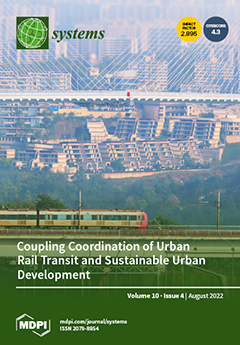The present study is innovative in its integration of several novel and quickly developing disciplines of
QMS,
SoS,
Globalization and Systems approaches including
Systems Thinking. We inaugurate
G-QMS in global SoS organizations as a new field of research. This is
[...] Read more.
The present study is innovative in its integration of several novel and quickly developing disciplines of
QMS,
SoS,
Globalization and Systems approaches including
Systems Thinking. We inaugurate
G-QMS in global SoS organizations as a new field of research. This is an exploratory study that uses the
Grounded Theory combined with an
analytical review and
professional experience to provide a framework for identifying of new key variables in the multidimensional environment of global management. The purpose of this study is to create a theoretical foundation for this field, and introduce logical deductions regarding G-QMS in global SoS organizations that can be used as foundational principles for defining and modeling of G-QMS. The methodology of the study includes a paradigm that combines
analytical review, which integrates the four main disciplines into a
structured qualitative study based on semi-structured interviews, and used Grounded Theory. The findings show that G-QMS is a necessary condition for these organizations, while the management of G-QMS is inseparable from the management of the SoS. The final results reveal
18 aspects to be considered in any definition determined for G-QMS in global SoS organizations, and any model to be developed. From these,
8 base anchors for the model were analyzed and mapped, as well as its main factors. In conclusions, each of these base anchors makes its own contribution to any further development in this area. However, considering them all together creates an
initial model of
G-QMS in global SoS organizations.
Full article





